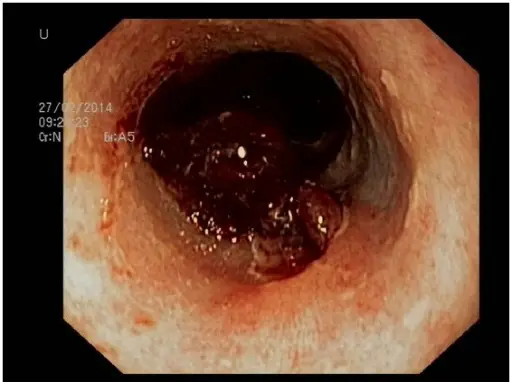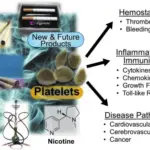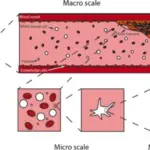Primary hemostasis is the formation of the initial platelet plug.
There are four steps are four steps of primary hemostasis, and are as follows:
Step 1: Transient vasoconstriction of the damaged vessel wall that is mediated by stimulation and endothelin release from endothelial cells
Step 2: Platelet adhesion to the surface of damaged vessel. Von Willebrand factor (vWF) binds exposed subendothelial collagen. Platelets bind vWF using the GPIb receptor.
Step 3: Platelet degranulation. Adhesion causes shape change in platelets and degranulation with release of multiple mediators. ADP is released from platelet dense granules which promotes exposure of GPIIb/ IIIa receptor on platelets. TXA2 is synthesized by platelet cyclooxygenase (COX) and released; promotes platelet aggregation
Step 4: Platelet aggregation. Platelets aggregate at the site of injury via GPIIb/IIIa using fibrinogen as a linking molecule which results in formation of a weak platelet plug.



